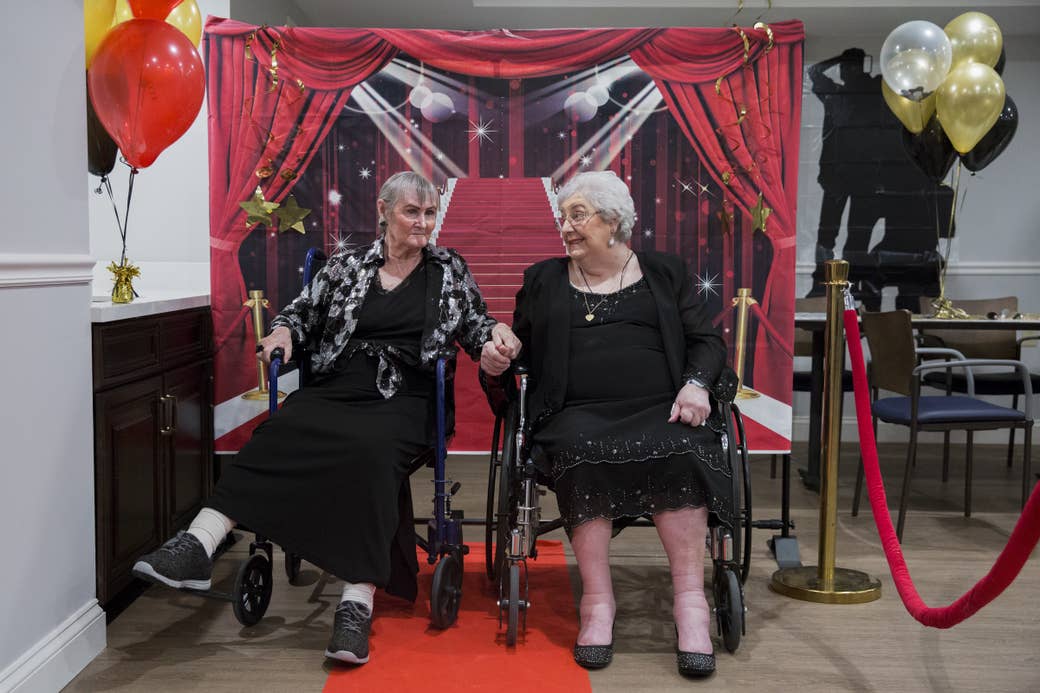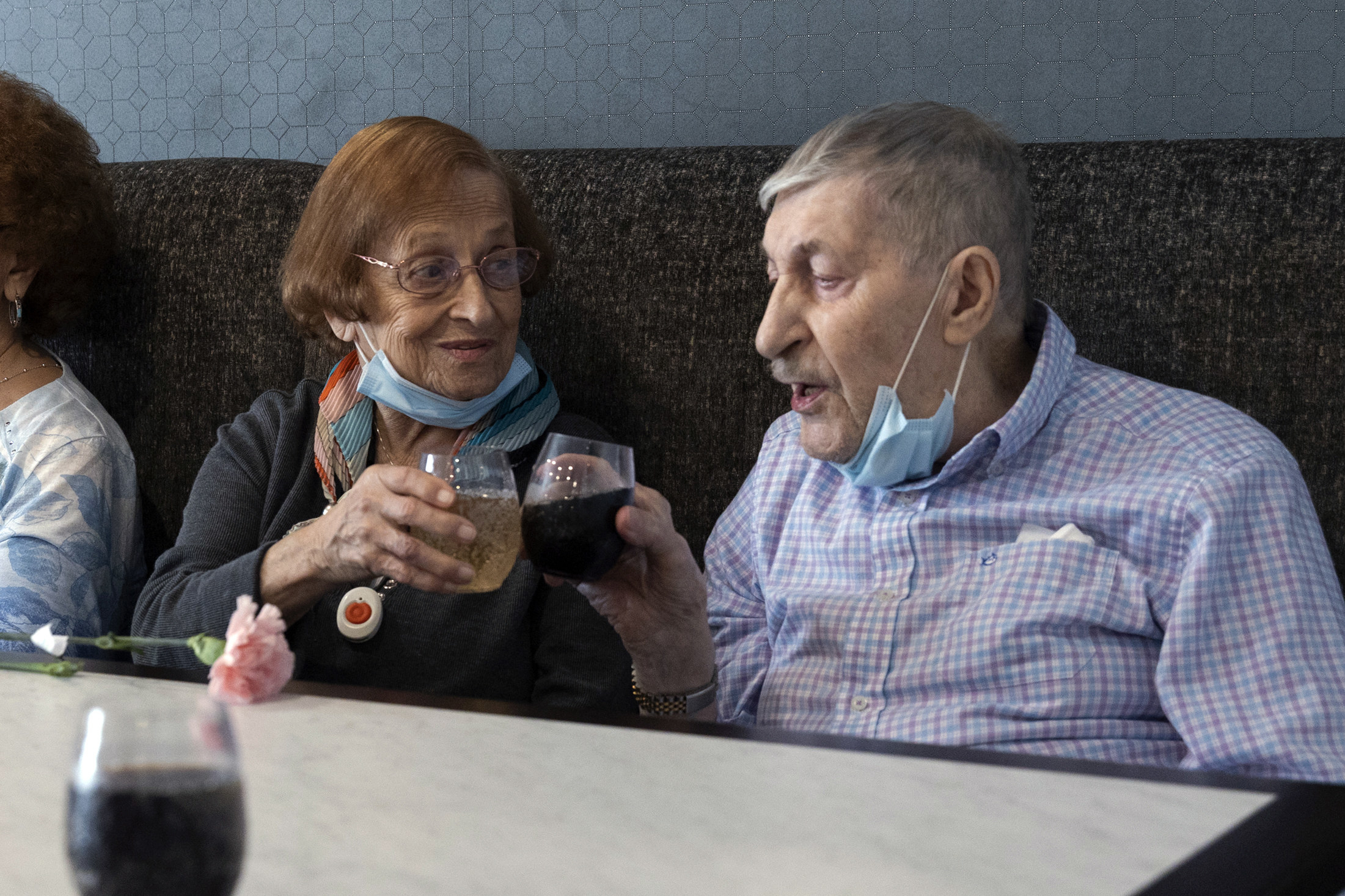
In the United States, the care of many older adults has gone from being a community responsibility and part of everyday family life to a private industry. In the wake of the coronavirus pandemic, where people were quick to shrug off the risk of the virus once they knew it was most deadly to those aged 65 and over, the visibility of older people is more important than ever.
The media coverage of the pandemic laid bare the toll taken on senior living communities, but often in abstract, almost dismissive terms — focusing on the deaths instead of the lives of those still here. This summer, I devoured Being Mortal, Atul Gawande’s book on end-of-life care in America. Being Mortal captivated me in how much it spoke to my experiences with Brandywine Living at Senior Suites in East Norriton, Pennsylvania.
“It seems we’ve succumbed to a belief that, once you lose your physical independence, a life of worth and freedom is simply not possible,” Gawande writes.
At Brandywine, that couldn’t be more untrue.
I first visited Brandywine in 2011, when my high school art club took several trips there around Christmas to make cards with the residents. I was an aspiring photographer at the time, and when I found out that the home held a yearly “senior prom,” I asked if I could come back and document it.
I returned to the facility again in college, to take pictures of residents for the facility’s monthly bulletin board. After I graduated, I began working as a freelance photojournalist in Philadelphia. I couldn’t stop thinking about the home and decided to continue to take photos in 2019 as an ongoing personal project.
Before the pandemic, residents put their arms around each other’s shoulders as they walked down the hallways. They hugged and slow-danced with the activities directors during bowling matches and parties. They comforted one another, with hands grasped and foreheads kissed, when someone was upset or confused because of their dementia, aches and pains, or remembering a spouse who had died.
Antoinette Ciccarone, a “memory care” resident who has since died from progressive dementia, was nonverbal and would alternate between kissing her friends and gleefully squeezing her stuffed toy dog. Rosemarie Morello, another longtime resident, would hold my hands and kiss my cheeks, continually telling me she loved me and asking when she could adopt me. She was dating another resident, Fran Miscioscia — they were both in their 90s — and she would get emotional talking about their plans to marry in spring 2020.
The residents were incredibly playful. Mary Tantarelli, a 97-year-old woman who curses like a sailor, pretended to request a song from a musical entertainer and then, when he leaned in to hear her better, tried to kiss him. Jim Fazio, a former Elvis impersonator nicknamed “Mr. Twist,” twisted so low that he touched the ground at the annual 4th of July party.
When the pandemic forced Brandywine residents to shelter in place in March 2020, Morello and Miscioscia’s wedding was called off. The residents had to keep their distance from one another and from the staff. Physical touch was forbidden, and I wasn’t permitted to enter the facility. Jessica Gonzalez, the executive director, still tears up at the mention of the pandemic. Though the virus itself was difficult, she said, “the toll that we saw the isolation take on our residents was almost unbearable.”
“We don’t really understand how important human contact is until we don’t have it,” she added.
According to the CDC, recent studies found that “social isolation significantly increased a person’s risk of premature death from all causes” and was associated with about a 50% increased risk of dementia, a 29% increased risk of heart disease, a 32% increased risk of stroke, as well as higher rates of depression, anxiety, and suicide.
Six Brandywine residents died from COVID. Some, like Ginny Tornetta, 91, contracted the virus but survived. Tornetta admits that contracting COVID forced her to quit smoking, but it’s hard not to notice the much larger effect it had on her cognition — she is now in memory care.
“It was sad to stay in our rooms,” Tantarelli told me. “We lost a lot.”
According to research by the Alzheimer’s Association, there have been upwards of 50,000 more “collateral” deaths nationally from Alzheimer’s and dementia since the pandemic began. Ciccarone died from progressive dementia in September 2020, as did Miscioscia in February 2021. He and Morello had not yet wed. Morello, vibrant and affectionate the year before the pandemic, has been noticeably sad ever since.
When Brandywine opened back up to masked and vaccinated visitors in February, I was struck by the cognitive decline in the residents I had gotten to know so well. Many residents with whom I had previously developed relationships were no longer sure who I was. One resident asked me, “Is this your first day here?” Another asked if I was somebody’s granddaughter. Tantarelli couldn’t remember my name at first, although she did recognize me as “the photographer.” Morello seemed slower, like she was now in a perpetual fog. But she still said to me, “I love you. You’re so beautiful. I’m going to adopt you.”
Germania Belen, the facility’s activities director since 2018, said that keeping the residents safe during the pandemic was a “team effort.”
“We aggressively implemented ‘you cannot come here without your mask,’ ‘you cannot socialize [outside of work],’” she said. “We had a team [working] for 45 days straight. We were here 24/7.”
“Our residents are so tight-knit in our community, [they] really see each other as family, and having to keep them isolated from one another and from the staff was very, very difficult,” Gonzalez echoed. “The toll that we saw the isolation take on our residents was something that was almost unbearable.”
Pauline Frisco, a 95-year-old who has lived at Brandywine for six years, kept her spirits up by looking forward to visits from her son at her bedroom window.
Belen said the way that the residents responded to the pandemic was a huge learning experience. “[They] taught me that life sometimes can be tough but, for you to be stronger, you need to go through things, and then you [will] overcome the bad and enjoy your life each day,” she added.
Gonzalez said that, as the facility’s director, watching the residents resume their social lives has been “the highlight of the pandemic” for her.
She recalled that, in December, they were finally able to get residents out of their rooms for the first time and have a meal together at a holiday party.
“Just to see the joy on their faces,” Gonzalez said. “I mean, they didn’t want to leave.”
Tantarelli agreed.
“Oh god, I was so happy,” she said. “I was screaming and yelling my head off!”
Over the last year, it’s been a privilege to see physical touch resume at Brandywine. In February, residents and staff received their COVID-19 vaccinations. Tantarelli squeezed her favorite nurse Jonathan Chartier’s hand for support and screamed "I'm pregnant!" when he tried to walk away. Chartier laughed and replied, “At your age, that would be very impressive.”
With most of their usual activities canceled or postponed for COVID safety, new ones were added to keep the residents busy, social, and inside. The most popular activity, by far, has been the happy hour — demand saw it increase from weekly to daily.
Pauline Frisco never misses it and makes sure that her friends don’t either. One day, in May, she knocked on her friend MaryAnn Giandomenico’s door to find her upset. Giandomenico has dementia, which has gotten much worse during the pandemic. After giving her a hug, Frisco walked her down the hall to the “pub.” Giandomenico turned to her and asked, “Do you love me?” Frisco answered, “Sure, I love you.” When the pair arrived at the happy hour, they joined their friends in clinking their glasses and said a cheers for “health.”
This past September, Brandywine celebrated their annual National Assisted Living Week, a spirit week of sorts that normally includes the “senior prom” that I had first attended almost 10 years ago, not too long after my own prom. The residents would dress up, dance to music, and even crown a king and queen. The last prom king, from 2019, was Robert Hampton, who was one of the six Brandywine residents to die from COVID.
This year, residents honored Hampton and the other residents who died over the past two years by releasing live butterflies outside the facility. The names of the dead were typed, single-spaced, over two sheets of paper and spoken aloud.
As Gonzalez read a poem to the assembled crowd, Rita Fox, one of many residents who have moved into Brandywine during the pandemic, didn’t want to let her butterfly go. Tears ran down her face as she tried to pull the butterfly out of the air and back into her embrace. On the other side of the pavement, James “Moon” Mullen laughed when he accidentally sat on his butterfly.
The mix of tears and laughter at the memorial echoed the residents’ response to the pandemic.
“They take every moment for what it’s worth and live it to the fullest,” Gonzalez said. “I think that the younger generations — we’re the ones that are having a more difficult time adjusting to the post-pandemic world that we’re living in now, and we’re still fearful. They’re ready to go out and do things… and it’s pretty cool to see.”
Gonzalez’s observation is echoed by multiple studies showing that happiness increases later in life. While the loss the residents sustained due to the pandemic is indescribable, love and hope still exists at Brandywine. Frisco, at 95, is still the first person to get up and twirl around the room to music whenever she hears it. Tantarelli, at 97, never misses an opportunity to flirt with the staff. After returning from a family vacation to the beach she said, with her signature sass, “this place was dead without me.”
“I really don’t feel like I come to work. I feel like I come to visit family,” Gonzalez told me. “It’s almost like I’m coming home every morning.”
I have similarly felt like the residents and staff at Brandywine have become my family — over the last year, I’ve spent more time with the residents than I have my own grandparents. Now that the residents are receiving their COVID booster shots and my project has drawn to a close, I look forward to returning to Brandywine with a new purpose. Instead of photographing, I’ll be visiting to spend time with Pauline, Mary, Rosemarie, and all of my other surrogate grandparents while I still can. ●

This photo project was completed with support from the National Geographic Society.
















